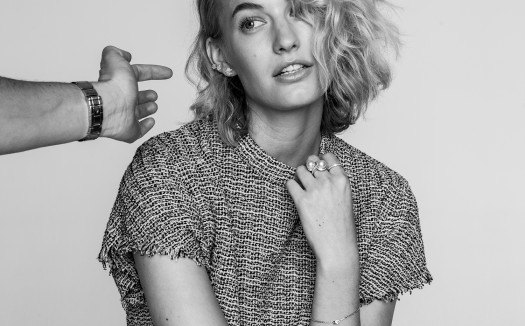This post is like a follow-up to my ‘How To Photograph Like A Foodstagrammer’ article. I’m not saying I’m the best Food Stylist because I most certainly am not, but there have definitely been huge lessons and tricks I’ve learned along the way, which I’m happy to share with you today. Ready for my top food photography tips?
Lighting
There are many different ways to use and manipulate light, but I like to keep it simple and true. I only use natural light - I like it tell a story and reveal the time of day I shot a photo. Was it quite a moody, dark shot taken late in the day or very light in the morning? I don’t use direct light, just light coming through a window away from the glaring rays. Some photographers like to use white screens or reflectors to create certain affects. For example, lighting a cake evenly without obvious shadows and highlights. To achieve this, simply hold a piece of white card or fabric on the dark side. The light will reflect off the white and onto the cake. You can also get into proper expensive studio lights, but that’s typically for bigger, commercial shoots.
Props, props, and more props.
You seriously can’t have enough food props. In fact, they consume my bedroom, but I have a problem. Anyway, food props are important as they can contribute to creating a specific mood or feeling. For example, if you’re wanting to create a wholesome rustic soup, you might use lots of old wood and thick cloths with neutral-coloured dishes.
Composition
This is something that gets better with practice. It refers to the layout of your food and props. You need to try to create a shot that is both balanced and interesting to the eye. Play with shapes, textures, and colours. Also, the compositional lines are critical - use your surroundings to bring your eye into the main focus or the food. That could be achieved by using cutlery or other props to guide the eyes.
Enhance
These are the small things in food photography, yet without them, the image would not come to life. Essentially, they are the decorations and garnishing. For instance, as soon as you remove meat or anything cooked from a heat source, it loses its liveliness and becomes grey and dry on camera. This is basically because it continues to cook off the heat. To resolve this, you can take the artificial route by using chemicals to enhance it, or you can go the edible path like me. I use burnt butter, a trick I picked up from a real food stylist. Simply melt the butter and continue cooking it until it becomes a beautiful maple brown colour. Then spoon it over your food to make it photograph-ready. For fresher foods, like salads, you might want to use things like oils or spray water to create a fresh, vivacious, and healthy feeling. I like to use herbs and salts.
Keep things clean and simple.
It’s best to keep things as simple as possible when styling food so as to not distract the eye from the focal point. Keep props to a minimum and avoid filling the composition with useless decorative objects.
Add the human element.
Make the shot relatable. Whether that be an actual person holding the dish, taking a bite out of the food, or casually leaving a squeezed lemon to the side of a plate.
Practice makes perfect.
This is the most important tip. When I started, I expected my shots to be on the level of some of the top food stylists. That was seriously unrealistic because nothing is instant. It is by continuous practice and commitment that brings you close to perfection. Still, today I struggle to get what I think is the ‘perfect’ shot. If you scroll through my blog, you’ll see how far I have developed my style. Don’t beat yourself up because it is often the case that an artist doesn’t like his/her own work. Also, another thing I learned is to NOT compare myself to anyone else. Comparison will only get your images to look like everyone else’s.
Good equipment
There’s no denying, photography is an expensive hobby. I suggest starting off with basic equipment. As your skills improve and you’ve saved up, you can move onto better equipment. Currently, I am using a Canon 5D Mark III, which is an amazing camera, with a 50mm lens.
Post production
This is the final step in bringing your photos to life. I use Photoshop to edit all my photos. I learned how to use it at school and also with the help of Zanita’s amazing courses. I like Photoshop because I can incorporate text or other images into my photos. This can also be expensive, so if you don’t have Photoshop, you can easily use the editor on your phone.
Happy cooking!
–Ben
Instagram @benorkin + Blog + Pinterest
Snapchat: @benorks
You Should Also Read:
How To Photograph Like A Foodstagrammer
How To Go From Wannabe Baker To Actual Baker
The Most Useful Exercises Ever

